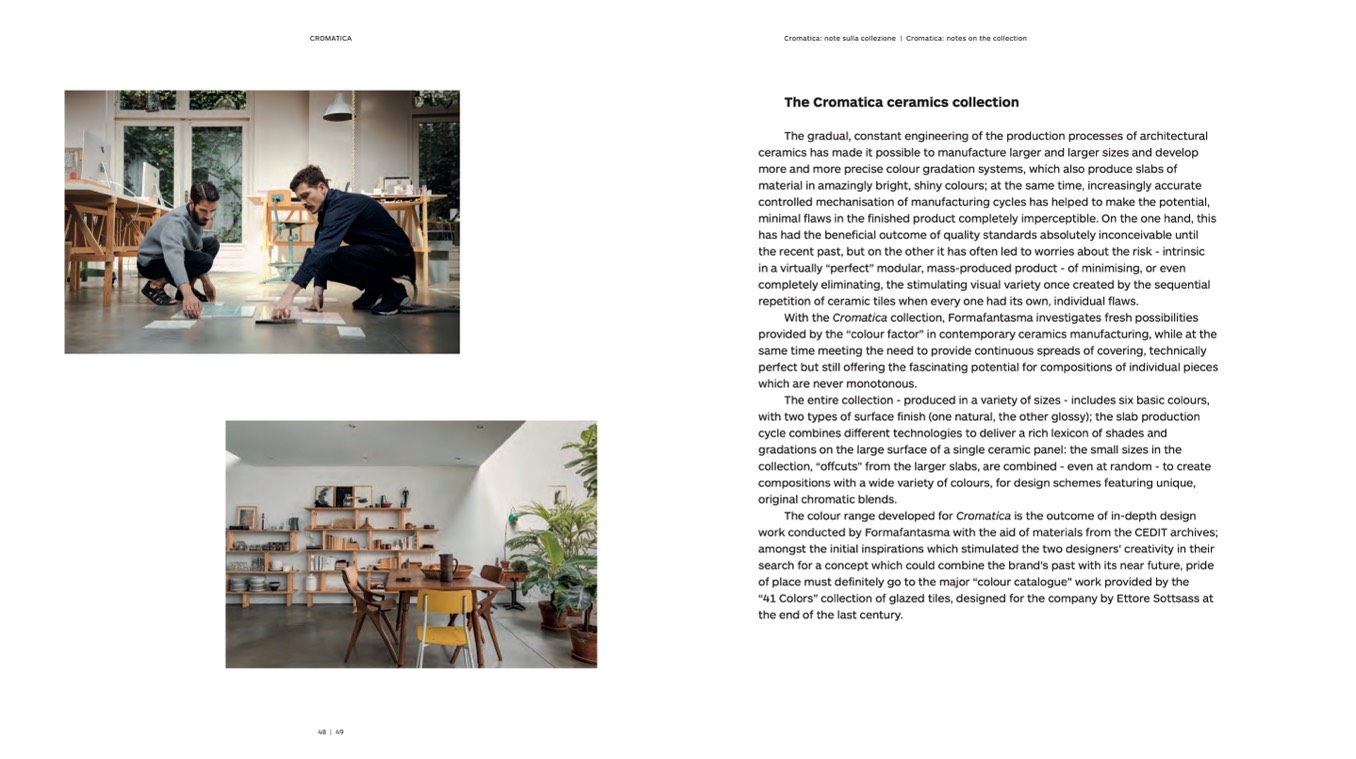
CROMATICA
Cromatica: note sulla collezione | Cromatica: notes on the collection
The Cromatica ceramics collection
The gradual, constant engineering of the production processes of architectural
ceramics has made it possible to manufacture larger and larger sizes and develop
more and more precise colour gradation systems, which also produce slabs of
material in amazingly bright, shiny colours; at the same time, increasingly accurate
controlled mechanisation of manufacturing cycles has helped to make the potential,
minimal flaws in the finished product completely imperceptible. On the one hand, this
has had the beneficial outcome of quality standards absolutely inconceivable until
the recent past, but on the other it has often led to worries about the risk - intrinsic
in a virtually “perfect” modular, mass-produced product - of minimising, or even
completely eliminating, the stimulating visual variety once created by the sequential
repetition of ceramic tiles when every one had its own, individual flaws.
With the Cromatica collection, Formafantasma investigates fresh possibilities
provided by the “colour factor” in contemporary ceramics manufacturing, while at the
same time meeting the need to provide continuous spreads of covering, technically
perfect but still offering the fascinating potential for compositions of individual pieces
which are never monotonous.
The entire collection - produced in a variety of sizes - includes six basic colours,
with two types of surface finish (one natural, the other glossy); the slab production
cycle combines different technologies to deliver a rich lexicon of shades and
gradations on the large surface of a single ceramic panel: the small sizes in the
collection, “offcuts” from the larger slabs, are combined - even at random - to create
compositions with a wide variety of colours, for design schemes featuring unique,
original chromatic blends.
The colour range developed for Cromatica is the outcome of in-depth design
work conducted by Formafantasma with the aid of materials from the CEDIT archives;
amongst the initial inspirations which stimulated the two designers’ creativity in their
search for a concept which could combine the brand’s past with its near future, pride
of place must definitely go to the major “colour catalogue” work provided by the
“41 Colors” collection of glazed tiles, designed for the company by Ettore Sottsass at
the end of the last century.
48 | 49

